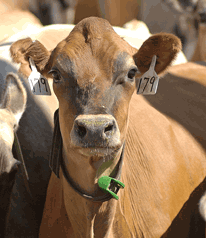It was a dynamite decade for Jerseys
 It is not going overboard to say that so far during the 21st century, Jerseys have been one of the dairy industry’s hottest trends. Not only does the soaring popularity of small brown cows not show any signs of slowing, but it only figures to increase as producers continue looking for ways to boost feed efficiency and profitability.
It is not going overboard to say that so far during the 21st century, Jerseys have been one of the dairy industry’s hottest trends. Not only does the soaring popularity of small brown cows not show any signs of slowing, but it only figures to increase as producers continue looking for ways to boost feed efficiency and profitability.One obvious yardstick of this enthusiasm is the number of new animals registered with the American Jersey Cattle Association each year, which set an all-time record in 2009. New records don't happen very often at organizations that are 142 years old, but this was the second one in a row for AJCA.
Cherie Bayer, the breed group's Director of Development, said total registrations in 2009 were 95,557, breaking the previous record of 94,774 in 2008. She noted that registration numbers dipped as low as 33,104 in 1973 and did not regularly exceed 60,000 per year until the late 1990s.
What happened to suddenly make headstrong small brown cows the belles of today’s commercial dairy ball? There's little doubt that the answer is Multiple Component Pricing of milk, which went into effect in Federal Milk Marketing Orders on January 1, 2000. Switching volume-based milk pricing to a system that rewards protein and butterfat clearly caused interest in Jerseys to soar, and has boosted their retail value onto a par with Holsteins as well.
In addition to greater demand for Jersey cows, Jersey A.I. semen sales have also surged as many dairies have started crossbreeding programs to boost protein and fat production in their herds. Bayer points out that between 1997 and 2008, Jersey A.I. semen sales increased 183 percent.
Labels: AJCA, Jersey, Multiple Component Pricing
0 Comments:
Post a Comment
Subscribe to Post Comments [Atom]
<< Home